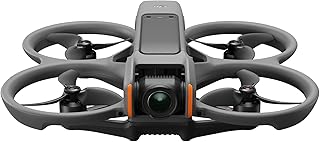DJI Drone Gimbal: How it Works and Why It's Important
DJI drones are renowned for their smooth, stabilized footage, and a key component behind this is the gimbal.
Here's how it works:
* Mechanism: The gimbal consists of 3 motorized axes that are independently controlled. These axes correspond to pitch, roll, and yaw, allowing the camera to rotate freely in all directions.
* Sensors: The gimbal utilizes sophisticated sensors, such as gyroscopes, accelerometers, and magnetometers, to detect movement. These sensors constantly measure the drone's position and orientation.
* Control System: The data from the sensors is processed by the gimbal control system, which then sends signals to the motors.
* Stabilization: The motors adjust the camera's position in real-time, counteracting any movement from the drone, wind, or other disturbances. This keeps the camera perfectly steady, even during flight maneuvers.
Why is the gimbal important?
* Smooth Video: The primary benefit of a gimbal is the ability to capture stable and smooth footage, even in challenging conditions. This is crucial for professional videographers, aerial photographers, and anyone wanting high-quality video.
* Enhanced Image Quality: By keeping the camera steady, the gimbal reduces blur and shake, resulting in sharper and more detailed images.
* Greater Creativity: The gimbal's ability to rotate the camera independently of the drone allows for unique and creative shots, such as following subjects, panning across landscapes, and capturing dynamic perspectives.
* Professional Applications: Gimbal-stabilized drones are widely used in various professional fields, including real estate photography, inspection, surveillance, search and rescue, and even film production.
In Conclusion:
The gimbal is an integral part of DJI drones, playing a vital role in their stability, image quality, and creative capabilities. It enables photographers and videographers to capture stunning footage, pushing the boundaries of aerial cinematography.


